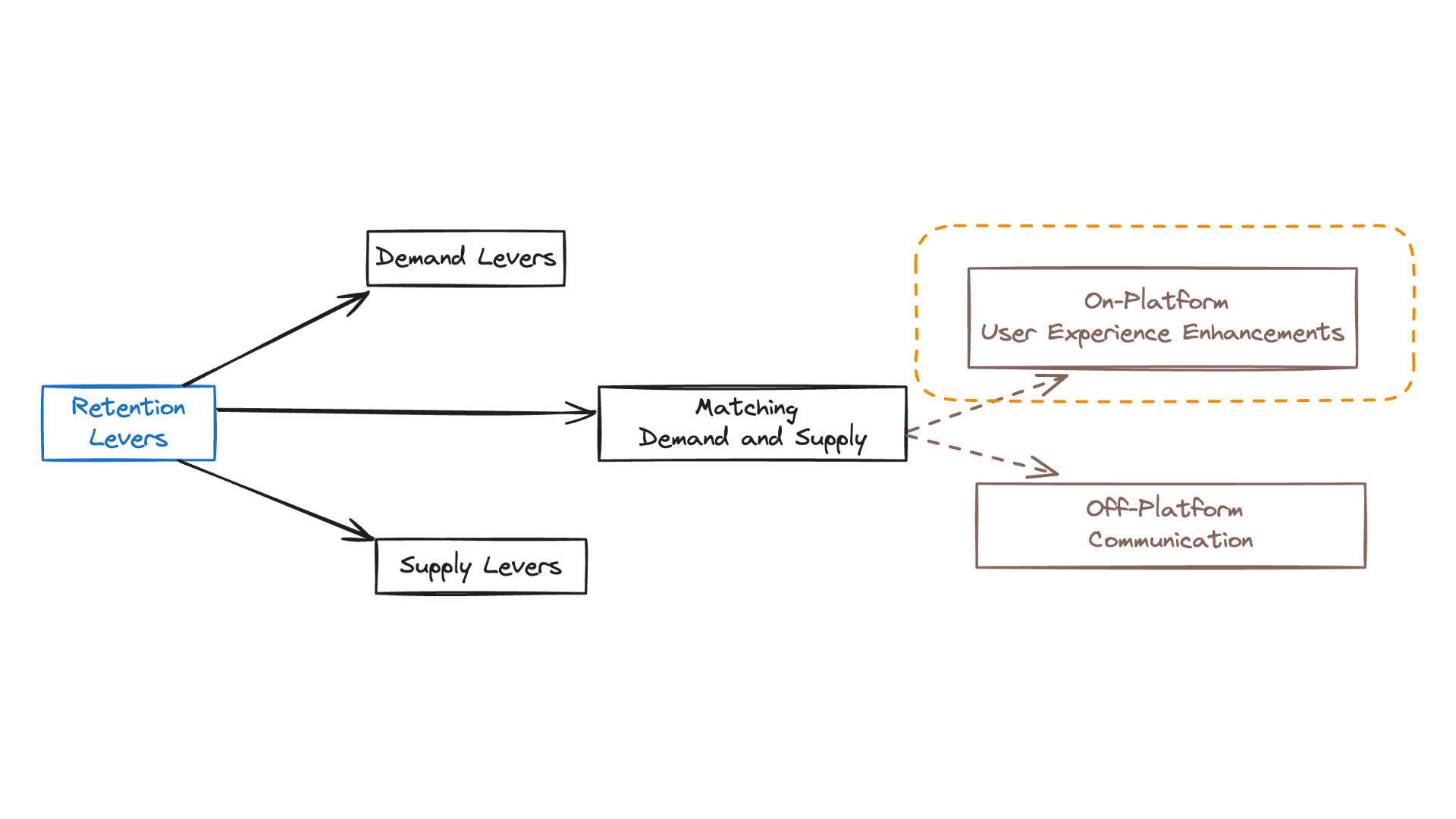How do On-Platform User Experience Enhance User Retention?
Retention rate for an app is fundamentally determined in the long run by 3 factors:
☞ the category the app is operating within (i.e. a social media app will intrinsically have higher retention rate than tax filing software);
☞ their efficiency in acquiring the right customer set; and
☞ their supply or core product features to service the customer needs.
With the baseline retention rate established by the factors above, however, it can be incrementally improved by on-platform features and off-platform communication.
These on-platform mechanisms, particularly personalized user experiences, play a critical role in improving retention by making each user's interaction more relevant and engaging. Let's explore how personalization can be effectively implemented across various platforms.

E-commerce Marketplaces:
In e-commerce, personalization can transform the shopping experience. By analyzing user behavior and purchase history, marketplaces can display personalized product recommendations, tailored deals, and dynamic homepages that resonate with each user's preferences.
Example: An e-commerce marketplace uses machine learning algorithms to predict and display products that a user is likely to be interested in, based on their browsing and purchase history, thereby increasing the likelihood of repeat purchases.
Consumer Apps:
For consumer apps, especially those focused on content delivery like streaming services or news apps, personalization involves curating content feeds based on user interactions and preferences. This ensures that users consistently find value, which is crucial for retention.
Example: A music streaming app personalizes playlists not only based on listening habits but also contextual factors like time of day or location, enhancing user engagement by delivering a highly tailored listening experience.
SaaS Applications:
SaaS platforms can benefit immensely from personalization by allowing users to customize their interface and workflow. This could include adjustable settings for displaying data, various integrations with other tools, or even personalized dashboards that highlight relevant metrics based on the user's role or preferences.
Example: A project management SaaS enables users to customize their dashboard to show priority tasks, recent activities, and performance charts that are pertinent to their specific projects and roles, making daily navigation and task management more efficient.
By using on-platform personalization, platforms can significantly enhance the user experience, making each interaction not just functional but uniquely suited to the individual's needs and preferences.
This tailored approach is key to not just attracting users, but retaining them over the long term by continuously meeting and exceeding their expectations.